Toyota RAV4 VS Dacia Duster – Specs, Efficiency & Price Comparison
Find out now which car fits your needs better!
The Toyota RAV4 (SUV) is powered by a Full Hybrid or Plugin Hybrid engine and comes with a Automatic transmission. In comparison, the Dacia Duster (SUV) features a LPG, Full Hybrid or Petrol MHEV engine and a Manuel or Automatic gearbox.
When it comes to boot capacity, the Toyota RAV4 offers 580 L, while the Dacia Duster provides 517 L – depending on what matters most to you. If you’re looking for more power, you’ll need to decide whether the 306 HP of the Toyota RAV4 or the 140 HP of the Dacia Duster suits your needs better.
There are also differences in efficiency: 1 L vs 5 L. In terms of price, the Toyota RAV4 starts at 35100 £, while the Dacia Duster is available from 16300 £.
Compare all the key specs now and find out which model fits your lifestyle best!
In a head-to-head comparison, the Dacia Duster impresses with its rugged off-road capabilities and unbeatable price point, making it an ideal choice for budget-conscious adventurers. Meanwhile, the Toyota RAV4 offers a more refined experience with superior interior materials, advanced safety features, and a reputation for long-term reliability that appeals to family-oriented drivers. Both SUVs serve different needs, with the Duster excelling in cost-effectiveness and the RAV4 in comfort and technology.
Toyota RAV4
The Toyota RAV4 stands out in the crowded SUV market with its distinct design, embodying a blend of robustness and style. Its cabin provides a harmonious fusion of comfort and practicality, offering plenty of space for both passengers and luggage. This vehicle is engineered to deliver a smooth driving experience, whether manoeuvring through city streets or exploring winding country roads.
details @ Toyota
@ Toyota
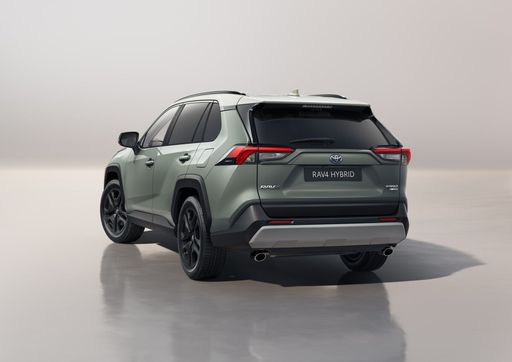 @ Toyota
@ Toyota
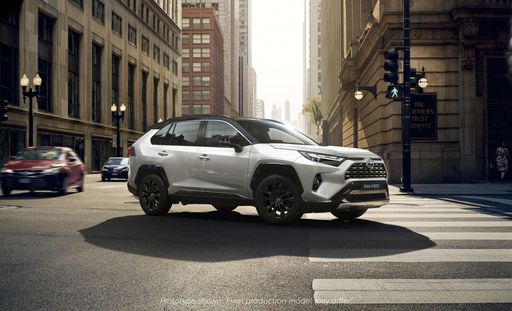 @ Toyota
@ Toyota
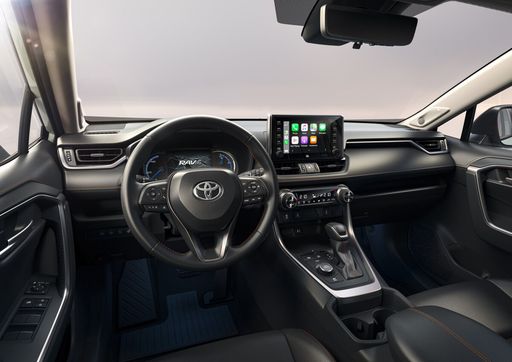 @ Toyota
@ Toyota
Dacia Duster
The Dacia Duster represents a compelling choice for those seeking an affordable yet robust SUV in the market. With its rugged design and practicality, it tackles both urban commutes and off-road adventures with ease. Inside, the vehicle offers a spacious cabin that ensures comfort, while maintaining its reputation for delivering excellent value for money.
details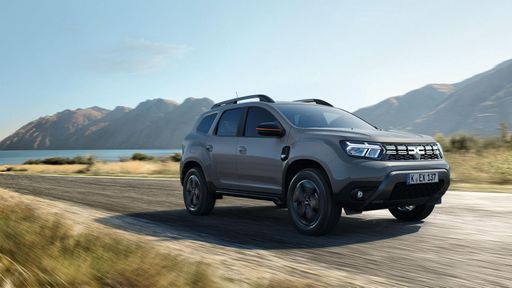 @ dacia-presse.de
@ dacia-presse.de
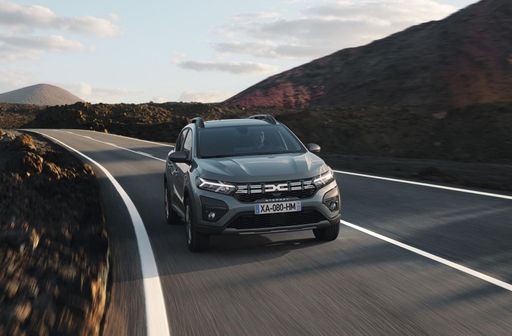 @ dacia-presse.de
@ dacia-presse.de
 @ dacia-presse.de
@ dacia-presse.de
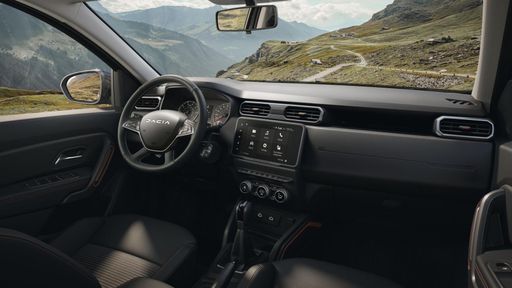 @ dacia-presse.de
@ dacia-presse.de
The Battle of SUVs: Dacia Duster vs Toyota RAV4
In the bustling world of sports utility vehicles, two models stand out for their unique offerings — the Dacia Duster and the Toyota RAV4. Each brings its own set of strengths to the table, capturing the hearts of drivers across various preferences and needs. Let’s dive deeper into these two models and discover what makes each of them a compelling choice for SUV enthusiasts.
Design and Dimensions
The Dacia Duster and Toyota RAV4, though both classified as SUVs, offer different designs catering to varied aesthetics. The 2024 Duster stretches 4343 mm in length, 1813 mm in width, and stands at 1656 mm tall, crafting a compact yet robust look. Meanwhile, the RAV4, with a 4600 mm length, 1855 mm width, and 1685 mm height, boasts a slightly larger profile, appealing to those who desire more presence on the road.
Performance and Power
Performance aficionados will find intriguing propositions in both vehicles. The Dacia Duster offers multiple engine configurations, ranging from LPG and full hybrid to petrol MHEV, with power output spanning from 91 HP to 140 HP. Its torque varies from 160 Nm to 230 Nm, providing flexible drivetrains that include front-wheel and all-wheel drive options. On the performance front, it accelerates from 0-100 km/h in 9.9 to 14 seconds, with a top speed of 180 km/h.
In contrast, the Toyota RAV4 packs a stronger punch with engine choices that include full hybrid and plug-in hybrid options, delivering between 218 HP to a whopping 306 HP. The RAV4's acceleration is notably brisk for its class, accelerating from 0-100 km/h in just 6 to 8.4 seconds. It presents the same drivetrain options as the Duster but with a focus on maximizing efficiency and power.
Fuel Efficiency and Environmental Impact
For those focused on fuel economy and environmental impact, the Toyota RAV4 shines brightly. With an exceptional consumption rate of 1 L/100km in its plug-in hybrid version and an electric range of 75 km, it offers the dual advantage of driving economy and reduced emissions. Its CO2 efficiency class ranges from B, showcasing Toyota's commitment to greener driving solutions.
The Dacia Duster, while not as frugal, still offers commendable efficiency with figures between 5 to 8.1 L/100km. Its CO2 efficiency class spans from C to E, reflecting moderate eco-friendliness. For everyday drivers who crave practicality over cutting-edge eco technology, the Duster provides a satisfactory middle ground.
Interior and Cargo Space
Both SUVs accommodate up to five passengers, but the differences emerge in their cargo offerings. The Dacia Duster comes with trunk capacities ranging between 430 L and 517 L, which is adequate for weekend adventures. The Toyota RAV4 surpasses this with a more generous trunk space of up to 580 L, perfect for those who prioritize cargo capacity for family trips or extensive road journeys.
Price and Value Proposition
The Dacia Duster is recognized for offering great value for money, catering to budget-conscious buyers who wish to enjoy the SUV lifestyle without breaking the bank. Its straightforward approach and cost-effective options make it an attractive option for pragmatic consumers.
In contrast, the Toyota RAV4 is seen as a premium mainstream offering, delivering advanced hybrid technology, a broad feature set, and exceptional reliability. It appeals to those willing to invest more upfront for a blend of modern conveniences, exemplary efficiency, and robust performance.
Conclusion
Ultimately, choosing between the Dacia Duster and the Toyota RAV4 hinges on individual priorities. The Duster appeals to those seeking an economical SUV with decent performance and practical features, while the RAV4 targets drivers wanting cutting-edge hybrid technology, superior power, and enhanced cargo capacity. Both stand as strong contenders in the SUV segment, offering a testament to the diversity of choices available to today's car buyers.

|

|
|
|
|
Costs and Consumption |
|
|---|---|
|
Price
35100 - 55700 £
|
Price
16300 - 24800 £
|
|
Consumption L/100km
1 - 5.6 L
|
Consumption L/100km
5 - 8.1 L
|
|
Consumption kWh/100km
-
|
Consumption kWh/100km
-
|
|
Electric Range
75 km
|
Electric Range
-
|
|
Battery Capacity
-
|
Battery Capacity
0.60 kWh
|
|
co2
22 - 128 g/km
|
co2
114 - 147 g/km
|
|
Fuel tank capacity
55 L
|
Fuel tank capacity
49 - 55 L
|
Dimensions and Body |
|
|---|---|
|
Body Type
SUV
|
Body Type
SUV
|
|
Seats
5
|
Seats
5
|
|
Doors
5
|
Doors
5
|
|
Curb weight
1745 - 1910 kg
|
Curb weight
1351 - 1465 kg
|
|
Trunk capacity
520 - 580 L
|
Trunk capacity
430 - 517 L
|
|
Length
4600 mm
|
Length
4343 mm
|
|
Width
1855 mm
|
Width
1813 mm
|
|
Height
1685 mm
|
Height
1656 - 1661 mm
|
|
Payload
390 - 600 kg
|
Payload
414 - 430 kg
|
Engine and Performance |
|
|---|---|
|
Engine Type
Full Hybrid, Plugin Hybrid
|
Engine Type
LPG, Full Hybrid, Petrol MHEV
|
|
Transmission
Automatic
|
Transmission
Manuel, Automatic
|
|
Transmission Detail
-
|
Transmission Detail
Schaltgetriebe, Automatisiertes Schaltgetriebe
|
|
Drive Type
Front-Wheel Drive, All-Wheel Drive
|
Drive Type
Front-Wheel Drive, All-Wheel Drive
|
|
Power HP
218 - 306 HP
|
Power HP
91 - 140 HP
|
|
Acceleration 0-100km/h
6 - 8.4 s
|
Acceleration 0-100km/h
9.9 - 14 s
|
|
Max Speed
180 km/h
|
Max Speed
160 - 180 km/h
|
|
Torque
-
|
Torque
160 - 230 Nm
|
|
Number of Cylinders
4
|
Number of Cylinders
3 - 4
|
|
Power kW
160 - 225 kW
|
Power kW
67 - 104 kW
|
|
Engine capacity
2487 cm3
|
Engine capacity
999 - 1598 cm3
|
General |
|
|---|---|
|
Model Year
2024 - 2025
|
Model Year
2024 - 2025
|
|
CO2 Efficiency Class
D, B
|
CO2 Efficiency Class
D, C, E
|
|
Brand
Toyota
|
Brand
Dacia
|
Toyota RAV4
The Toyota RAV4: A Modern Marvel in the SUV Segment
The Toyota RAV4 has long been a staple in the SUV market, renowned for its reliable performance and innovative design. In the latest iterations, Toyota continues to build on this legacy by integrating advanced technology and superior engineering.
Hybrid Excellence: Under the Hood
The latest RAV4 models are equipped with impressive hybrid engines, offering both full-hybrid and plug-in hybrid options. The performance spectrum ranges from 218 to a staggering 306 PS, providing power without compromising efficiency. These engines are paired with a responsive CVT automatic transmission, delivering a smooth driving experience.
The hybrid variants achieve remarkable fuel efficiency, with consumption rates as low as 1.0 to 5.6 litres per 100 kilometres, depending on the model. Additionally, the plug-in hybrid versions boast an impressive electric-only range of up to 75 kilometres.
Performance Meets Practicality
The Toyota RAV4 is not just about power; it also offers practical features that enhance the driving experience. With a top speed of up to 180 km/h and a rapid acceleration capability of 0-100 km/h in just 6 to 8.4 seconds, it combines the thrill of driving with everyday usability.
The spacious interior comfortably seats five, with a generous boot capacity ranging from 520 to 580 litres, making it ideal for family adventures or long road trips.
Innovative Driving Dynamics
One of the RAV4's standout features is its driving dynamics. Available in both front-wheel and all-wheel drive, the all-wheel drive variants, branded as AWD-i, offer enhanced traction and stability, providing peace of mind in various driving conditions.
Furthermore, Toyota has ensured that the RAV4 caters to diverse tastes and preferences, with several trim levels like the Adventure AWD-i, Business Edition, and the sporty GR SPORT AWD-i, offering unique features and styling options.
Eco-Friendly and Cost Effective
Environmental considerations are central to the RAV4 design philosophy. The model range adheres to strict CO2 emission standards, rated between 22 and 128 g/km, placing it in the B to D CO2 efficiency classes.
Moreover, the running costs of the RAV4 reflect its excellent efficiency, with monthly expenses ranging from €1,068 to €1,315, and cost per kilometre between 42.7 and 52.6 cents, making it a sensible choice for eco-conscious drivers.
Conclusion: The RAV4's Unmatched Appeal
Whether you're a city driver or an adventure seeker, the Toyota RAV4 offers a perfect blend of power, efficiency, and practicality. Its state-of-the-art hybrid technology, coupled with its versatile features, truly sets it apart in the competitive SUV market. With the Toyota RAV4, drivers experience the best of both worlds: exceptional performance and eco-friendly innovation.
Dacia Duster
Discovering the Duster: Dacia's Affordable SUV
The Dacia Duster has long been a go-to choice for those seeking an affordable yet competent SUV. Known for its robust design and versatility, the new 2024 model year offers even more options to fit a variety of needs. Let's delve into the technical details and innovative aspects that set the Duster apart.
Engine Diversity: Tailoring to Your Needs
The Dacia Duster doesn't disappoint when it comes to engine variety. With options ranging from Gas and Voll-Hybrid to Benzin Mild-Hybrid, there's something for everyone. The engine power spans from 91 to 140 PS, providing levels of performance suited to different driving styles. Notably, the hybrid options are a nod to the growing demand for more eco-friendly vehicles while still maintaining affordability.
Efficiency and Performance in Harmony
Efficiency is a key highlight of the Duster lineup. Fuel consumption rates from 5 to 8.1 litres per 100 km make it a great choice for budget-conscious drivers. Coupled with acceleration times ranging from 9.9 to 14 seconds for 0-100 km/h, the Duster provides a balanced blend of economy and performance.
Precision in Design: Dimensions and Interior Space
The Dacia Duster stands at 4,343 mm in length, 1,813 mm in width, and height varies between 1,656 to 1,661 mm. These dimensions create an ample interior, comfortably seating five passengers with a boot capacity ranging from 430 to 517 litres. This is further enhanced with the different trim levels such as Essential, Expression, Extreme, and Journey, each offering various features.
Advanced Drivetrain Options
Dacia has always been keen on providing choice in drivetrain configurations to cater to a wider audience. The Duster is available with both front-wheel and all-wheel drive options, powered by either a manual or automatic transmission. This flexibility ensures that the Duster can handle both urban commutes and off-road adventures with equal competence.
Technical Specifications: A Deep Dive
The Dacia Duster is equipped with a variety of technical features that ensure a smooth driving experience. It features a range of torque outputs from 160 to 230 Nm, depending on the model. The vehicle's weight varies between 1,351 and 1,465 kg, which aids in its adept handling and stability. Moreover, the Duster meets modern safety expectations with CO2 emissions ranging from 114 to 147 g/km. The SUV's CO2-Effizienzklasse spans from D to E, reflecting its environmental considerations.
Conclusion: A Solid Choice in the SUV Market
The Dacia Duster remains a solid choice for drivers seeking an SUV that combines affordability, efficiency, and versatility. With its wide range of configurations and technical prowess, it continues to be a competitive player in the SUV segment. Whether you're after fuel efficiency, a bit more power, or the capability of off-road adventures, the Duster has you covered.
The prices and data displayed are estimates based on German list prices and may vary by country. This information is not legally binding.
